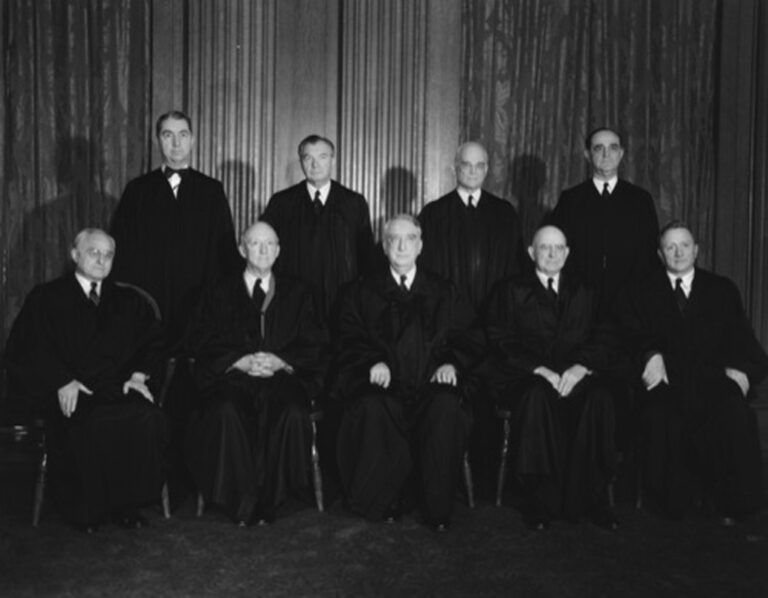
Dennis v. United States Case Overview
June 4, 1951
Washington, D.C.
Conviction upheld
Introduction
Background and historical context of Dennis v. United States
Events during Dennis v. United States
The event of Dennis v. United States unfolded through a prolonged legal process focusing on the application of the Smith Act.
The federal trial
The trial began with Eugene Dennis and ten other Communist Party leaders being charged with conspiring to advocate the overthrow of the U.S. government by force, in violation of the Smith Act. The trial lasted about nine months and drew significant public and media attention, featuring demonstrations and courtroom disputes. The defense argued that their advocacy did not present a “clear and present danger” to the government, emphasizing free speech protections. However, the presiding Judge Harold Medina instructed the jury not to consider whether the defendants’ actions actually posed harm, but only whether they conspired with the intent to overthrow the government if given the chance. After less than a day of deliberation, the jury found all defendants guilty.
The Supreme Court review
The case reached the U.S. Supreme Court, which delivered its ruling in a 6–2 decision on June 4, 1951. Chief Justice Fred M. Vinson wrote the plurality opinion, which upheld the convictions. The Court adopted a modified “clear and probable danger” test, derived from Judge Learned Hand’s formulation, to assess when speech advocating government overthrow could be restricted. This test considered both the gravity and the probability of the danger posed. The majority opinion asserted that the government could restrict speech before a violent overthrow was imminent, a broader standard than earlier “clear and present danger” rulings.
Opinions and dissent
While the majority upheld the convictions, Justices Hugo Black and William O. Douglas dissented sharply, arguing that the defendants were charged merely with conspiracy to teach and publish communist ideas, not with overt acts to overthrow the government. They viewed the use of the Smith Act as a form of unconstitutional prior censorship under the First Amendment. The dissent stressed that speech advocating ideas, without proof of imminent action, should be protected.
Throughout the court proceedings, the case raised complex questions about free speech limits during times of political tension. The trial and Supreme Court hearing together defined the legal boundaries of speech advocating government overthrow under the Smith Act, confirming convictions despite vigorous defense claims that no immediate danger existed. The event was marked by legal debate over how the First Amendment should apply to political advocacy in a Cold War context.